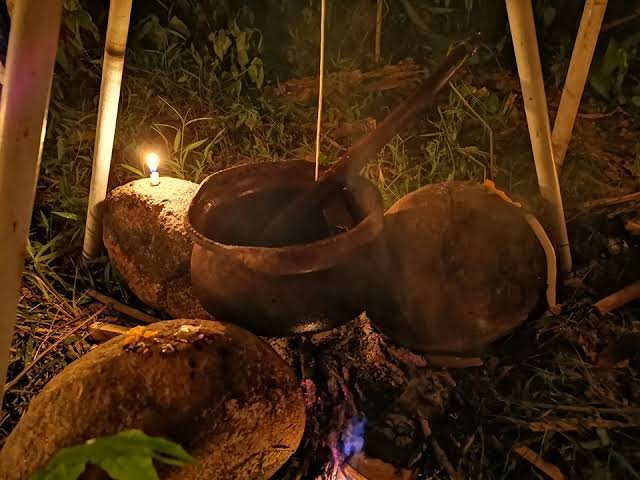
How Nam Man Prai is Made
Nam Man Prai is obtained using Tien Ron (the practice of rolling a candle flame over the skin) to extract fluid from the corpse of a pregnant woman who died along with the baby in her womb. The process requires a fearless and powerful magician, as it involves confronting terrifying and potentially dangerous spiritual entities. In extreme cases, the magician could be psychically attacked by the spirits of the dead mother and child, risking insanity or even death under mysterious circumstances.

Nam Man Prai possesses overwhelming power, often used to influence or enchant others. For instance, smearing a small amount on a woman’s skin renders her irresistibly drawn to the owner of the oil, as though bewitched. However, this enchantment causes the victim to become mindlessly fascinated with the perpetrator for life. Only the most powerful Hmor Pii (witch doctors) can remove this black magic, and even then, it is exceedingly difficult.

Historically, Nam Man Prai gained popularity among men of lower castes who sought to attract women of higher social standing. To make the oil, the magician must find a pregnant corpse that meets specific conditions. If the woman died naturally, the magic is considered weak. However, if the death was violent, such as through suicide, murder, or unnatural accidents (Phii Dtay Hong), the resulting oil is believed to have immense power. The rage-filled spirit of a pregnant woman who died violently amplifies the oil’s effectiveness.

The Ritual Process
The preparation begins by gathering ritual objects and visiting the cemetery after the corpse has been buried for three days. Upon arrival, the magician seeks permission from the cemetery deity (Nai Pha Cha), named Yaay Galaa Dtaa Galee, by offering items like boiled rice, eggs, fish, cigarettes, and Thai whiskey. The deity’s response is observed through the behavior of a lit incense stick. If the deity grants permission, the magician proceeds; otherwise, the ritual must be abandoned to avoid the wrath of the cemetery spirits.
After gaining permission, the magician identifies the grave, typically marked with protective Putsa tree thorns placed to prevent the spirit from escaping. The thorns and magical stones placed by the mortician to contain the spirit are removed using specific incantations. This step is critical to prevent the spirit from wreaking havoc. Once the coffin is exposed, the magician opens it while reciting Kata Akom (occult mantras) to bind the spirit and weaken its power.

The spirit may resist, manifesting frighteningly to deter the magician. A skilled Hmor Phii uses concentration and incantations to subdue the spirit, gaining permission to extract the oil. The extraction is performed using a candle made from pure beeswax and prepared with specific chants. Only a few drops of oil or pus are collected and mixed with a sacred coconut oil blend prepared from coconuts used in funerary rituals.

Final Preparation
The extracted Nam Man Prai is boiled with the coconut oil and beeswax over coals from seven funeral pyres. This mixture is continuously chanted over until it reaches the desired consistency. The oil is then bottled and taken for empowerment ceremonies in seven different temples. The bottle is placed under the gaze of the Buddha image in the temple’s shrine, and additional incantations are performed.
Using Nam Man Prai
Once fully empowered, Nam Man Prai is ready for use but requires daily offerings, such as food, sweetmeats, and incense, to appease the spirit within. Only individuals with strong minds and knowledge of Kata Gamgab (controlling mantras) can safely possess it. Misusing Nam Man Prai can lead to severe consequences, as it is often cursed to prevent abuse. To mitigate its effects, the oil can be reboiled with counteracting magical herbs.

Nam Man Prai must never be used in ways that violate moral principles, such as adultery, as this would break the Five Precepts of Buddhism. If used responsibly, users should dedicate merits to the spirit of the deceased to help release them from karmic suffering. However, any misuse may result in karmic retribution for both the user and the victim.

Applications and Traditions
Nam Man Prai is commonly used in amulets, lip gloss (See Pherng), or to soak other sacred objects like Gumarn Tong, In Koo, and Pra Khun Phaen amulets. It remains a significant yet controversial component in Thai magical traditions.